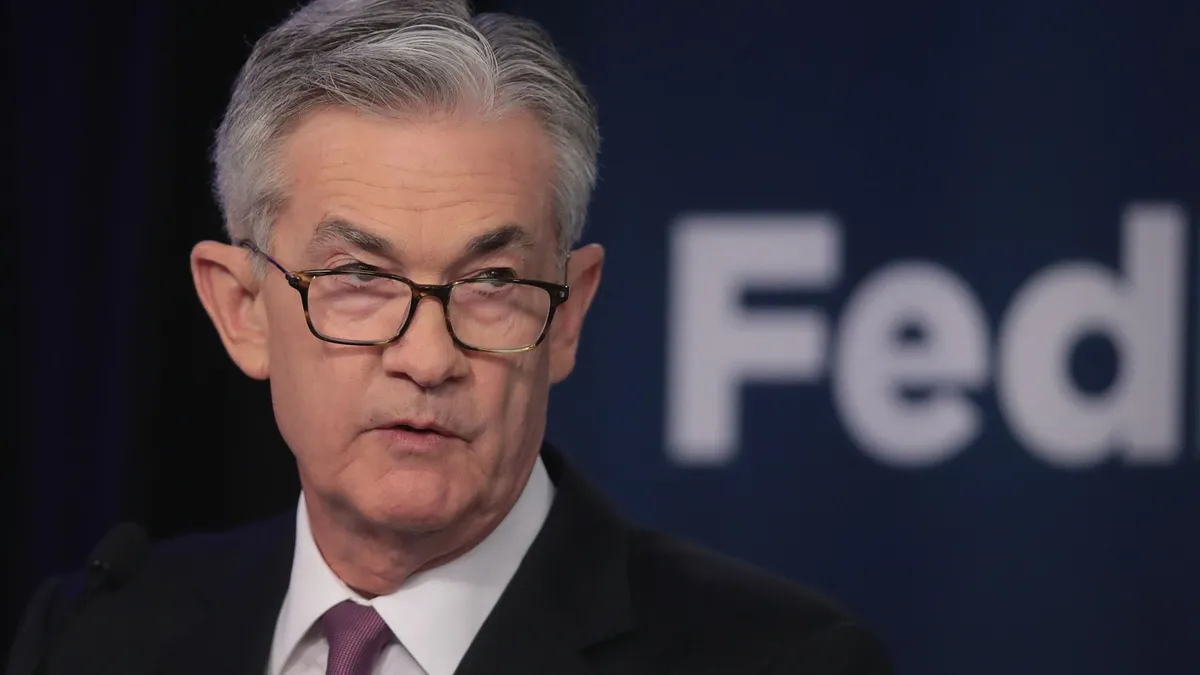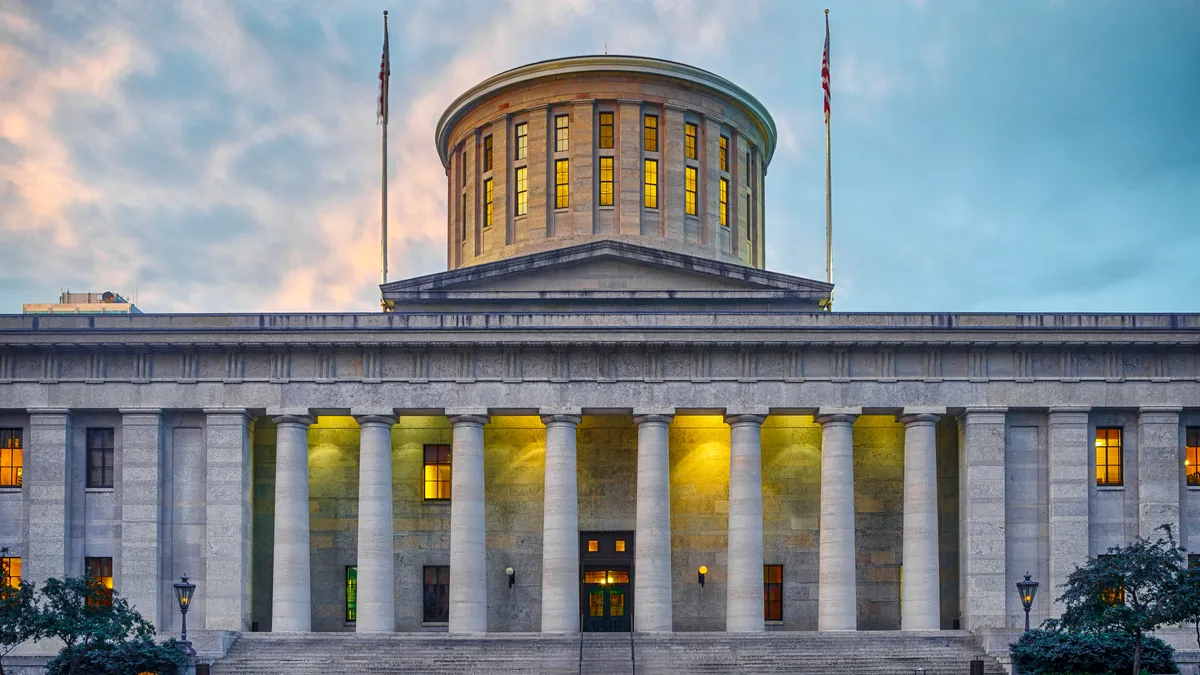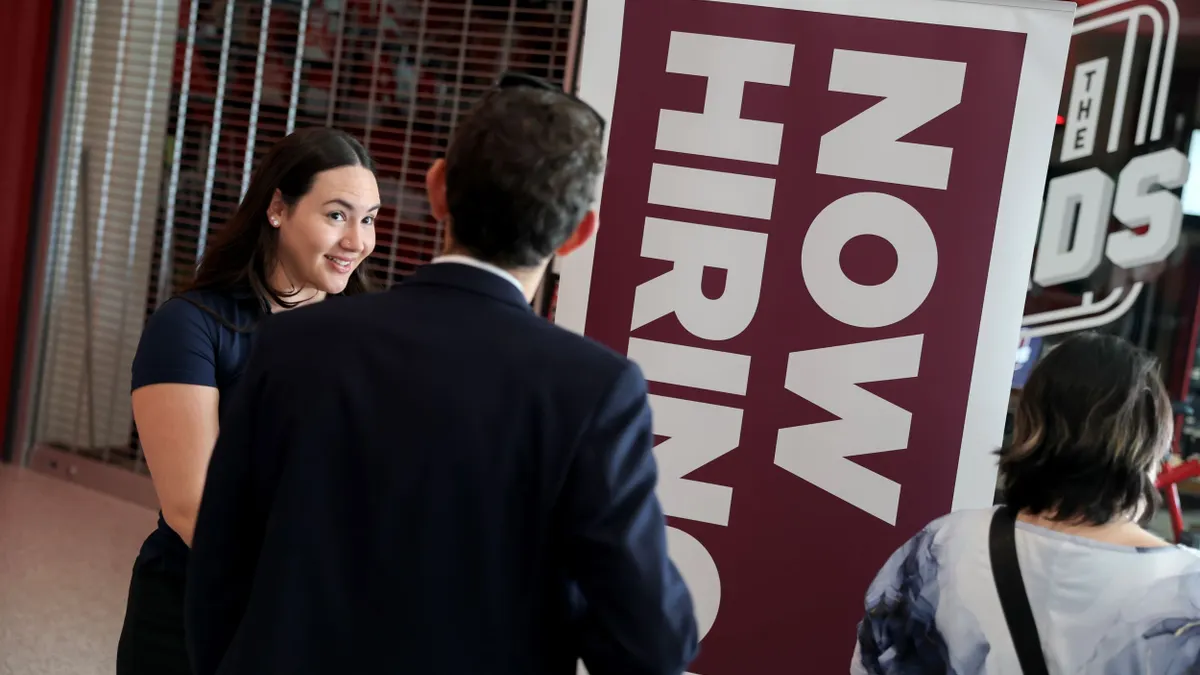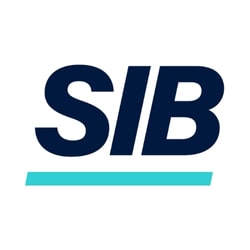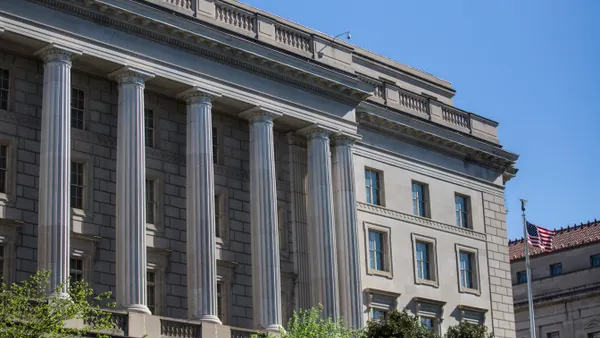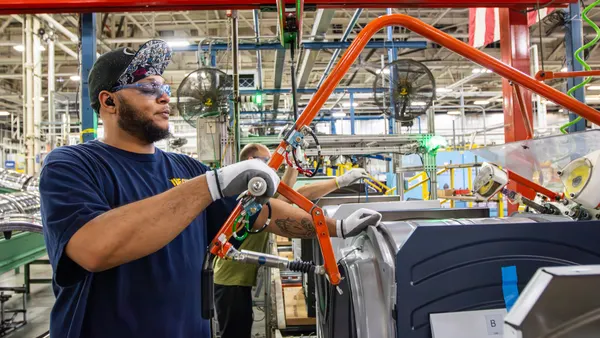Dive Brief:
- Federal Reserve Chair Jerome Powell said Tuesday the central bank faces growing risks that inflation and unemployment will rise, complicating efforts to meet its congressional mandate to ensure both stable prices and full employment.
- “Inflation is above target and gently rising,” Powell said after a speech to the National Association for Business Economics. Meanwhile, “the labor market is subject to pretty clear downside risks,” he said, noting the absence of a “risk-free” path for easing monetary policy.
- “If we move too quickly, then we may leave the inflation job unfinished and have to come back later and finish it,” Powell said. “If we move too slowly, there may be unnecessary losses — painful losses — in the employment market,” he said, adding “we’re in the difficult situation of balancing these two things.”
Dive Insight:
Hinting at an end to an effort at monetary tightening, Powell said the Fed may soon stop draining bank deposits from the financial system by halting reductions in the size of its $6.6 trillion balance sheet.
In 2020, at the start of the pandemic-induced shock to the economy, the central bank revived an effort to stimulate borrowing through a policy of so-called quantitative easing and began expanding its assets to nearly $9 trillion.
In 2022, when the economy showed signs of stability, the Fed began trimming assets by allowing its bond holdings to roll off the balance sheet every month.
“Our long-stated plan is to stop balance sheet runoff when reserves are somewhat above the level we judge consistent with ample reserve conditions,” Powell said. “We may approach that point in coming months, and we are closely monitoring a wide range of indicators to inform this decision.”
Philadelphia Fed President Anna Paulson on Monday voiced concern about the outlook for inflation and employment while hinting at an inclination to favor safeguarding the job market by cutting borrowing costs in the remaining weeks of 2025.
“The unemployment rate was 4.3% in August, near what I would characterize as full employment,” Paulson said in a speech to the NABE.
“But unemployment is up from 4.1% in June, and the August employment report suggests that momentum in the labor market is to the downside,” she said.
“Labor market risks do appear to be increasing — not outrageously, but noticeably,” Paulson said. “And momentum seems to be going in the wrong direction.”
Citing a softening in the job market, policymakers last month cut borrowing costs for the first time this year, trimming the federal funds rate by 0.25 percentage point to a range between 4% and 4.25%.
Paulson said that she aligns with a median forecast from Fed officials last month suggesting that the central bank will trim the federal funds rate by a quarter percentage point at each of its two remaining policy meetings this year.
Since the federal government shut down early this month, Powell, Paulson and other Fed officials are considering changes to monetary policy without fundamental federal data on the labor market, inflation and other aspects of the economy.
“In the employment space, there’s some plausible data,” Powell said, referring to state-level job market data and a monthly employment report by ADP.
Still, “the alternative data that we look at is better used as a supplement for the underlying government data, which is the gold standard,” he said.
Current data on inflation and economic growth that is not provided by the federal government is less reliable than the alternative data on the job market, Powell said.
Referring to the shutdown and the prospect of no federal data for October, Powell said, “if this goes on for a while they won’t be collecting it and it could become more challenging” for policymakers.



